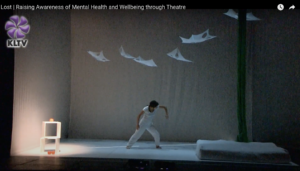-
Project background
In modern society, due to lack of knowledge, generation gap, busy pace of life and other reasons, many parents may have difficulty understanding or recognizing depression in their children. This story is a real situation in my friend’s real life. She suffered from depression for a long time, but was not understood by her family, which led to her becoming more and more serious and even attempted suicide. In the process of accompanying her, I learned about the physical and psychological status of real depression patients, and their needs. Through this project, I want to let more people know the inner world of depressed patients, know more about them, and give them appropriate help when they need it.
-
Storyline
The main character: a young girl suffering from depression, feeling lonely and not understood.
Background: Family members did not understand her condition and saw no reason for her to feel unhappy, which created additional stress on her.
Dream and reality: The little girl experiences terrifying dreams in her sleep, dreaming that she is being hunted, reflecting her inner fear and struggle.
Double ending:
(1) Dark self: The dream self represents the dark side of her heart, and her jumping off the building may symbolize being consumed by the darkness of her heart.
(2) The victory of the light: On the other hand, this can also be interpreted as her victory over the inner darkness, thus achieving inner liberation.
-
Stage design
Visual design: The combination of dynamic images, words, symbols to express the change of mental state.
Interactive elements: The audience can participate in the story through touch screens or mobile devices and influence the development of the story.


-
Technology application
(1)Tactile and visual interactive experience
Scene design: Through Touch Designer, create a series of interactive visual effects that symbolize different aspects of mental illness. For example, a scene can be designed to represent psychological stress and anxiety, using visual elements of instability and chaos to simulate the feelings brought about by mental illness.
Audience interaction: The use of camera capture and gesture recognition technology allows the audience to interact with visual elements on the stage through gestures, such as changing visual patterns or colors by waving, symbolizing the struggle and interaction with mental illness.
(2) Emotional trigger sound effects
Sound Design: Use Max/MSP to design dynamic sound effects that reflect the emotional changes in the performance. For example, in scenes depicting depression or anxiety, the sound effects can gradually change from calm to tension and unease. Combined with audience interaction, touch or movement can trigger different sound effects, enhancing the audience’s sense of immersion. For example, the audience’s movements can affect volume, rhythm, or tone, making them part of the performance.

-
Risk assessment
Emotional trigger: The performance may touch on sensitive topics and have an impact on the audience with mental health issues. Provide emotional trigger warnings, prepare mental health support resources at the show.
Misunderstanding and misdirection: Performances can be misunderstood and send the wrong message. Design content carefully to avoid misleading information and work with mental health professionals to ensure accuracy.

